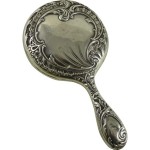Mirrors for Above Bathroom Vanities: A Comprehensive Guide
Bathroom mirrors are essential functional and decorative elements. They serve the practical purpose of aiding in grooming routines while also contributing significantly to the overall aesthetic and perceived spaciousness of the bathroom. Selecting the right mirror for above the bathroom vanity involves careful consideration of various factors, including size, shape, style, features, and installation methods.
Size and Scale
The size of the mirror should be proportionate to the vanity’s dimensions. A common guideline is to choose a mirror slightly narrower than the vanity itself, leaving a few inches of space on either side. However, larger mirrors can create an illusion of expanded space, especially in smaller bathrooms. Vertical mirrors can also enhance the sense of height in a room with lower ceilings.
Shapes and Styles
Rectangular, square, round, and oval are the most common mirror shapes. Rectangular and square mirrors offer a classic, timeless look, while round and oval mirrors can soften the angular lines of a bathroom and introduce a touch of modernity. More elaborate shapes, such as arched or geometric designs, can serve as statement pieces and reflect individual design preferences.
Frame Materials and Finishes
Mirror frames contribute significantly to the overall style of the bathroom. Popular frame materials include wood, metal, and plastic. Wood frames offer warmth and a traditional feel, while metal frames can introduce a sleek, contemporary aesthetic. Plastic frames are often more budget-friendly and offer greater resistance to moisture damage. Finishes range from polished chrome and brushed nickel to matte black and antique brass, allowing for seamless integration with existing bathroom fixtures and hardware.
Mirror Features and Functionality
Technological advancements have introduced a range of innovative features to bathroom mirrors. Illuminated mirrors, equipped with LED lighting, provide enhanced visibility for grooming tasks and contribute to ambient lighting. Magnifying mirrors offer a closer view for detailed tasks like applying makeup or shaving. Fog-free mirrors prevent condensation buildup, ensuring clear visibility even after a hot shower. Some mirrors even integrate Bluetooth technology for playing music or podcasts.
Installation Methods
Mirrors can be installed using various methods, including adhesive mounting, clips, and screws. Adhesive mounting is a relatively simple and mess-free option suitable for lighter mirrors. Clips provide a more secure attachment and are often used for heavier or larger mirrors. Screws offer the most secure installation method but require more effort and may involve drilling into the wall. Choosing the appropriate installation method depends on the mirror's weight, size, and the wall's material.
Matching with Bathroom Style
The mirror should complement the overall style of the bathroom. For a modern bathroom, a frameless or sleek metal-framed mirror might be appropriate. A traditional bathroom might benefit from a wood-framed mirror with ornate detailing. Matching the mirror frame's finish to the faucet and other hardware creates a cohesive and polished look.
Budget Considerations
Bathroom mirrors are available at a wide range of price points. Simple, frameless mirrors are typically the most affordable option. Mirrors with advanced features like integrated lighting or magnification tend to be more expensive. Setting a budget beforehand helps narrow down the options and ensures cost-effectiveness.
Maintenance and Care
Proper maintenance ensures the longevity and pristine appearance of the bathroom mirror. Regular cleaning with a glass cleaner and a soft cloth prevents the buildup of water spots and grime. Avoid using abrasive cleaners, which can scratch the mirror's surface. For framed mirrors, ensure the frame material is suitable for the humid bathroom environment and clean it according to the manufacturer's instructions. Promptly address any signs of damage, such as chips or cracks, to prevent further deterioration.
Lighting Considerations
The placement of the mirror in relation to the bathroom lighting is crucial. Avoid placing the mirror directly opposite a bright light source, as this can create glare and make it difficult to see clearly. Ideally, the light source should be positioned above or on either side of the mirror to provide even illumination across the face. Consider layering different types of lighting, such as overhead lighting, sconces, and vanity lighting, to create a balanced and functional lighting scheme.

How To Pick And Hang The Perfect Bathroom Mirror Roomhints

How To Pick And Hang The Perfect Bathroom Mirror Roomhints

How To Pick And Hang The Perfect Bathroom Mirror Roomhints

The Right Height For Your Bathroom Sinks Mirrors And More

27 Bathroom Mirror Ideas For Every Style Wall Decor

Art Deco Mirrors Are Mounted To A Frameless Vanity Mirror Hung Over White Dual W Bathroom Remodel Master Decorative

Brass Oblong Mirrors Over Hammered Sinks Contemporary Bathroom

How High To Place Your Bathroom Fixtures Inspired Style

How High To Place Your Bathroom Fixtures Inspired Style

How To Choose A Bathroom Mirror








